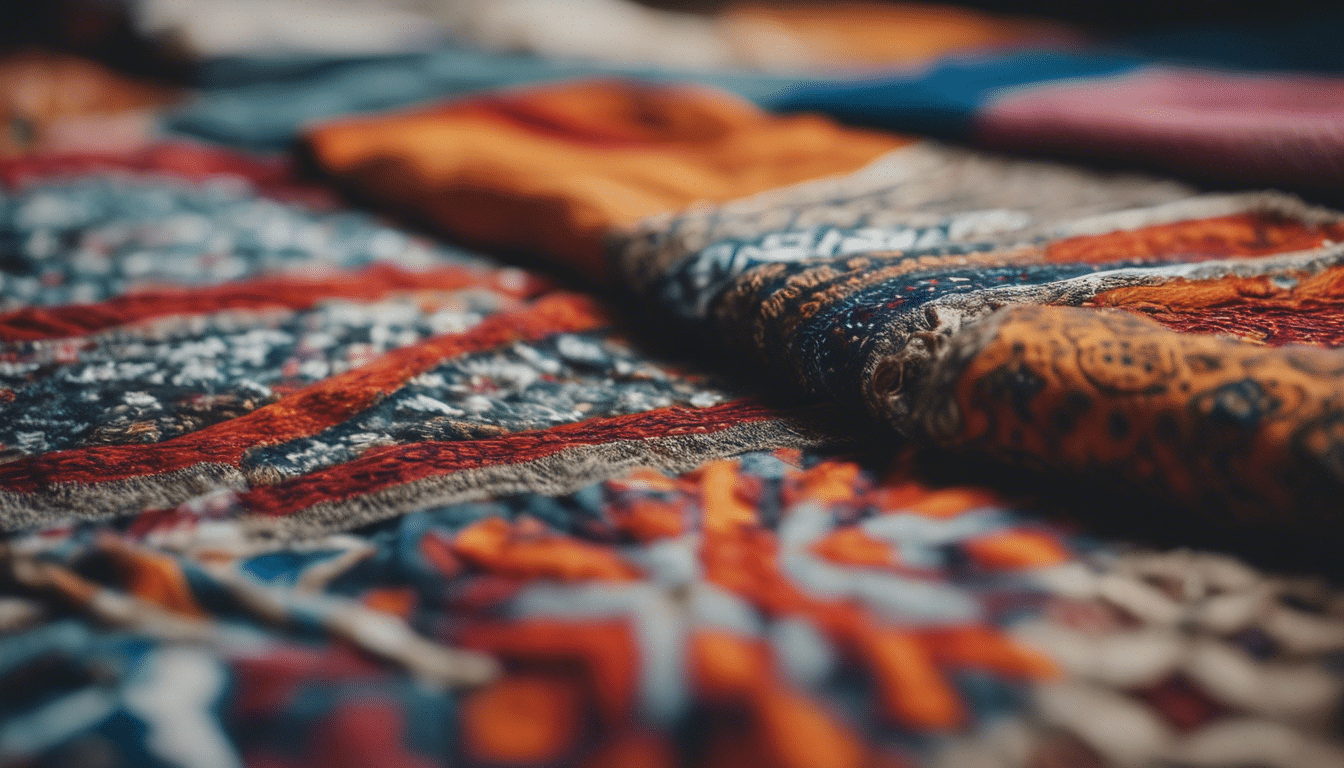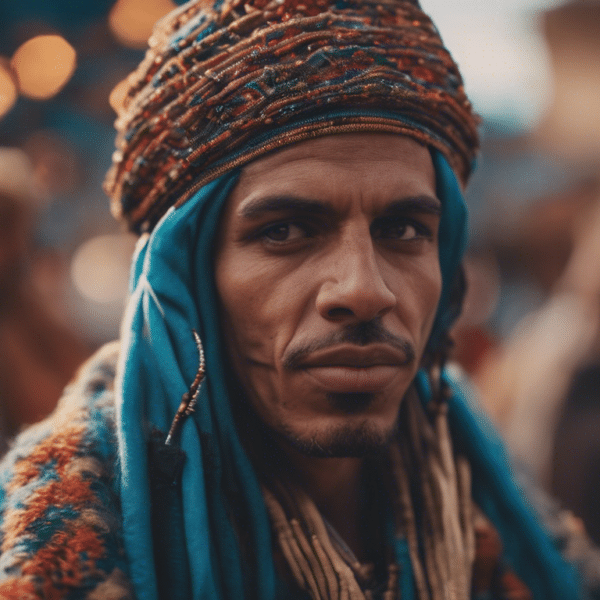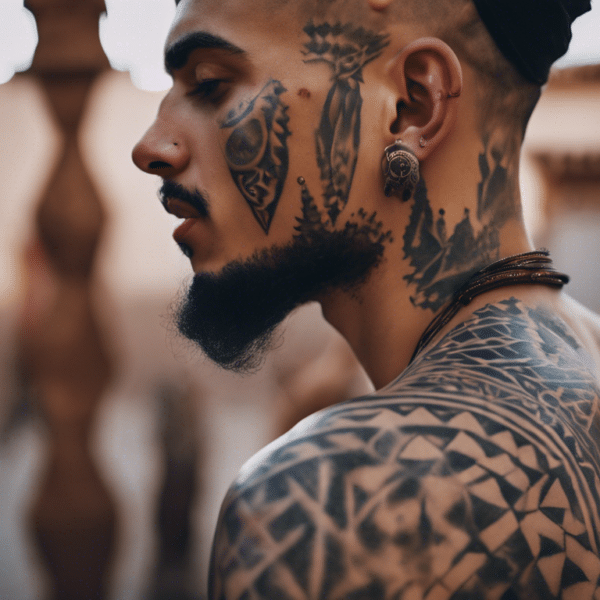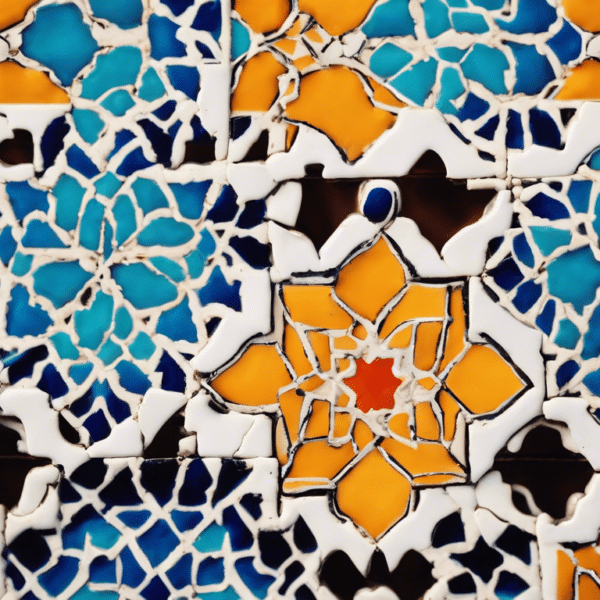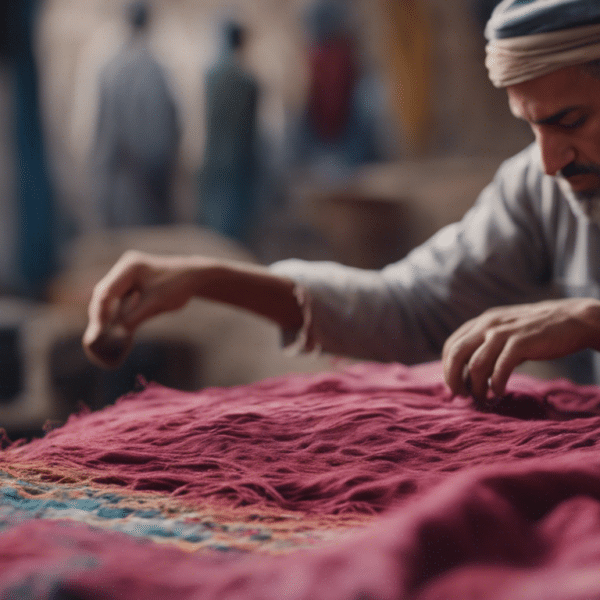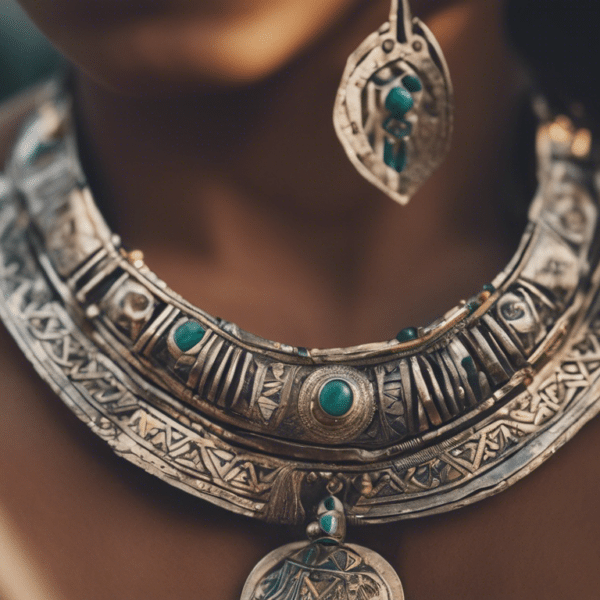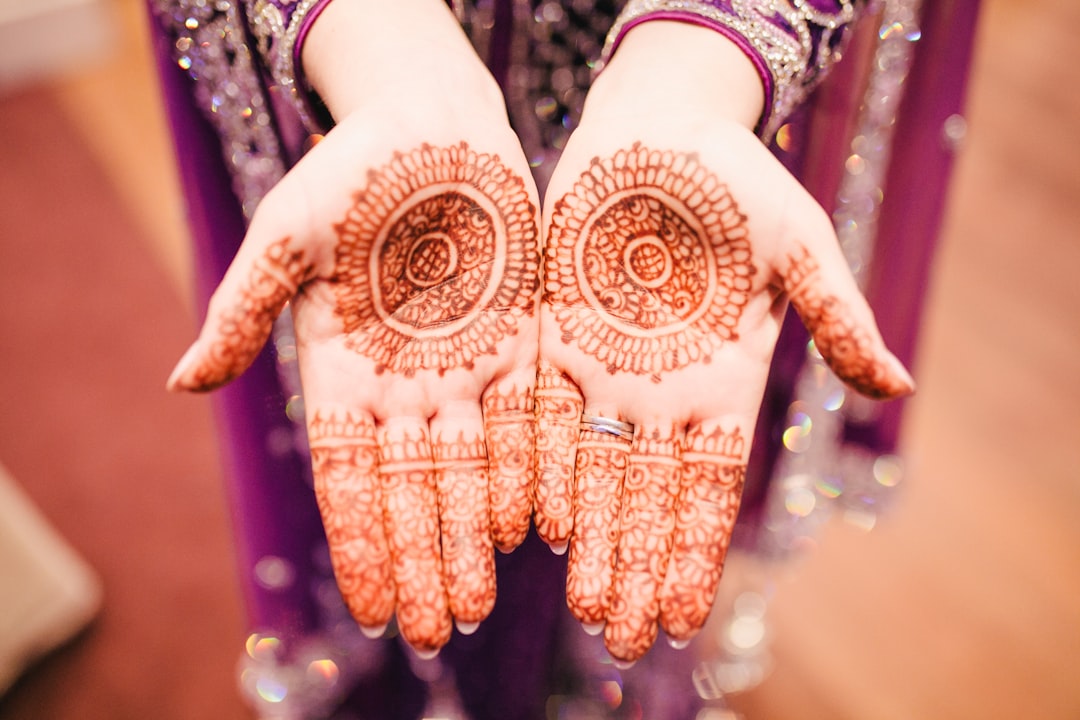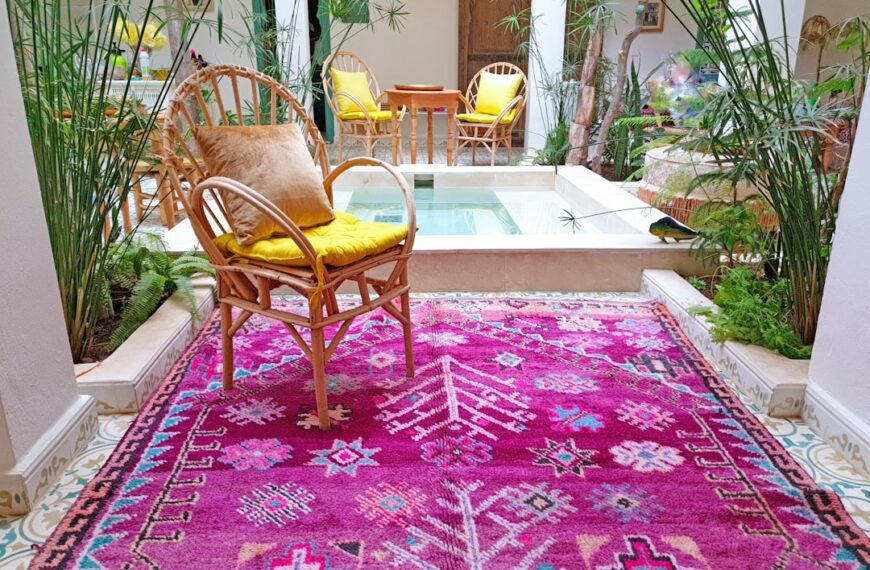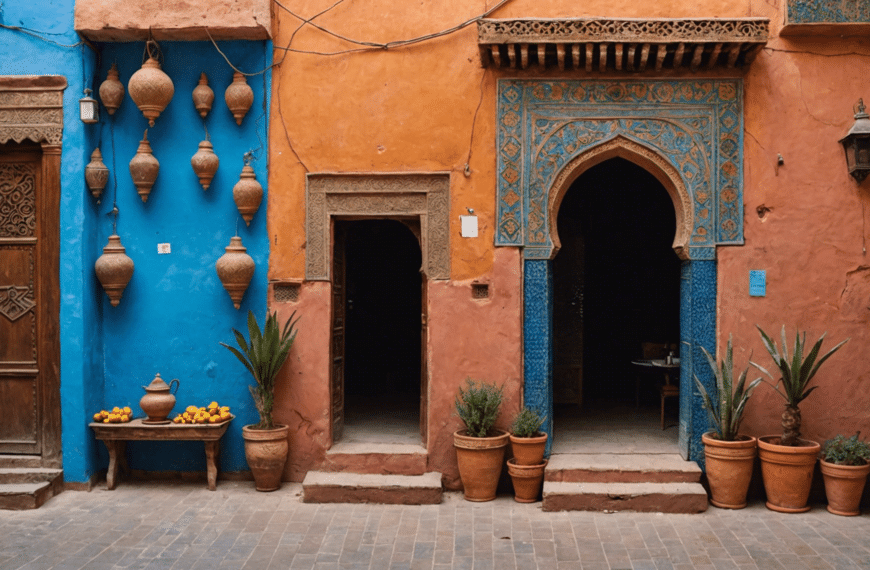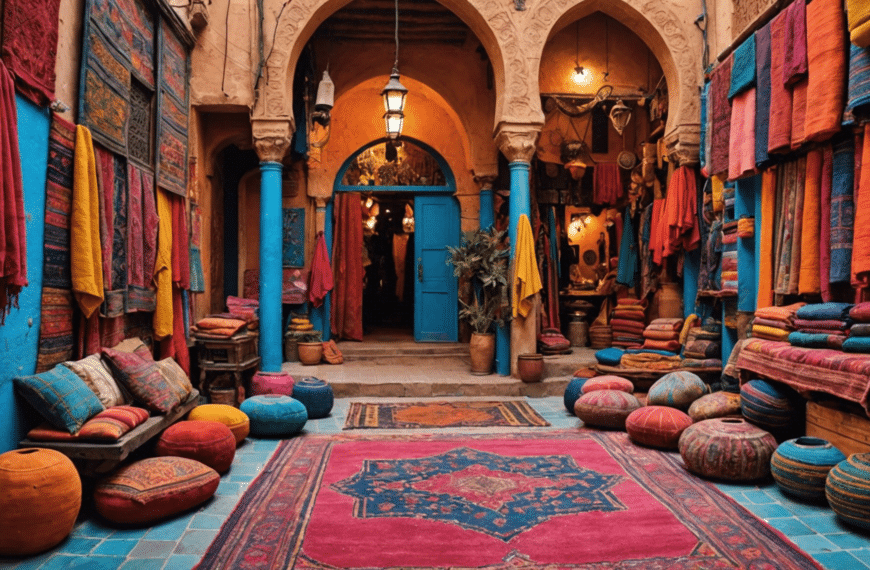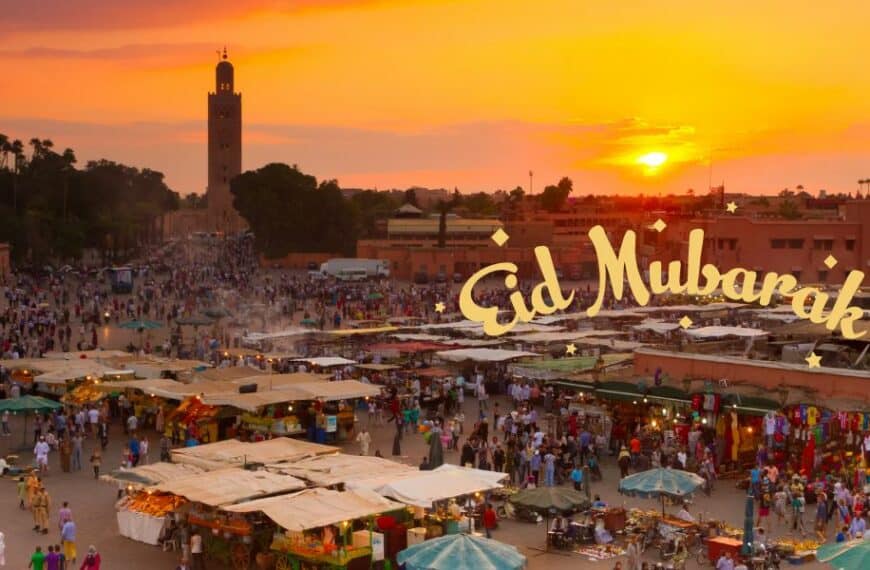Stepping into the rich tapestry of Moroccan culture, one is immediately embraced by the vibrant hues and intricate designs of its textile art. A form that has weaved its history through the hands of skilled artisans, Moroccan textile art is an open diorama of the country’s heritage, presenting a fusion of indigenous Berber motifs with Arab, Andalusian, and even sub-Saharan influences. The air thrums with the rhythmic sounds of looms as artisans transform fibrous wonders into tangible narrations of their lore.
Threads of Time: The Weaving Tradition
The weaving tradition in Morocco is a historical craft that reflects both functional necessity and artistic expression. Looms, both narrow and high, are the custodians of Moroccan family history, where the knowledge of crafting intricate berber carpets and fine textiles is passed down through generations. These carpets are not merely floor coverings but are embedded with stories, symbols, and the soul of the artist.
The Dye Masters of the Medina
Integral to the textile process are the Dye Masters, experts in transforming natural ingredients like saffron, indigo, and poppy into a spectrum of enduring dyes. The souks of Marrakech and Fez are alive with their concoctions, giving the textiles a rainbow of authenticity that synthetic colors could never replicate. This alchemy of color encapsulates an inheritance of eco-conscious wisdom, with the dye pits serving as vibrant testament to this ancient practice.
Beyond the Surface: Embroidery and Embellishments
Embroidery is more than surface adornment in Moroccan textile art—it’s an emblem of identity and status. The art of embellishments such as sequins, mirrors, and intricate beadwork, adds another dimension to the textiles. Kaftans and djellabas, traditional Moroccan garments, showcase this meticulous handiwork, each stitch a quiet testament to a dedicated craftsperson’s skill.
Preserving Cultural Threads in Modern Times
As the world races towards homogenized fashion, there’s a resurgent interest in preserving the cultural threads of Moroccan textile art. Cooperatives and women-led enterprises are at the forefront of this revival, not only nurturing the crafts but providing economic empowerment. These vibrant textiles have found their way into contemporary fashion and home décor, showcasing their timeless appeal and adaptability.
Workshops and Learning: Experiencing the Craft
For the culturally curious, Moroccan textile workshops offer a hands-on journey into the heart of this art form. Visitors can learn about the traditional techniques of weaving, dyeing, and embroidery, becoming part of the textile’s narrative. The kinship formed around a loom or dye pit is a unique cultural immersion, much sought after by enthusiasts and aficionados of world crafts.
Conclusion: A Living Art Form
Moroccan textile art embodies resilience and beauty, a living art form persisting through the currents of time. As more people seek authenticity in their travels and purchases, Moroccan textiles garner attention not just for their stunning aesthetics but for their storied origins. So next time one wraps oneself in a Moroccan scarf or sets foot on a handcrafted rug, consider the hands that made it and the stories it whispers.
The Roots of Moroccan Textile Art
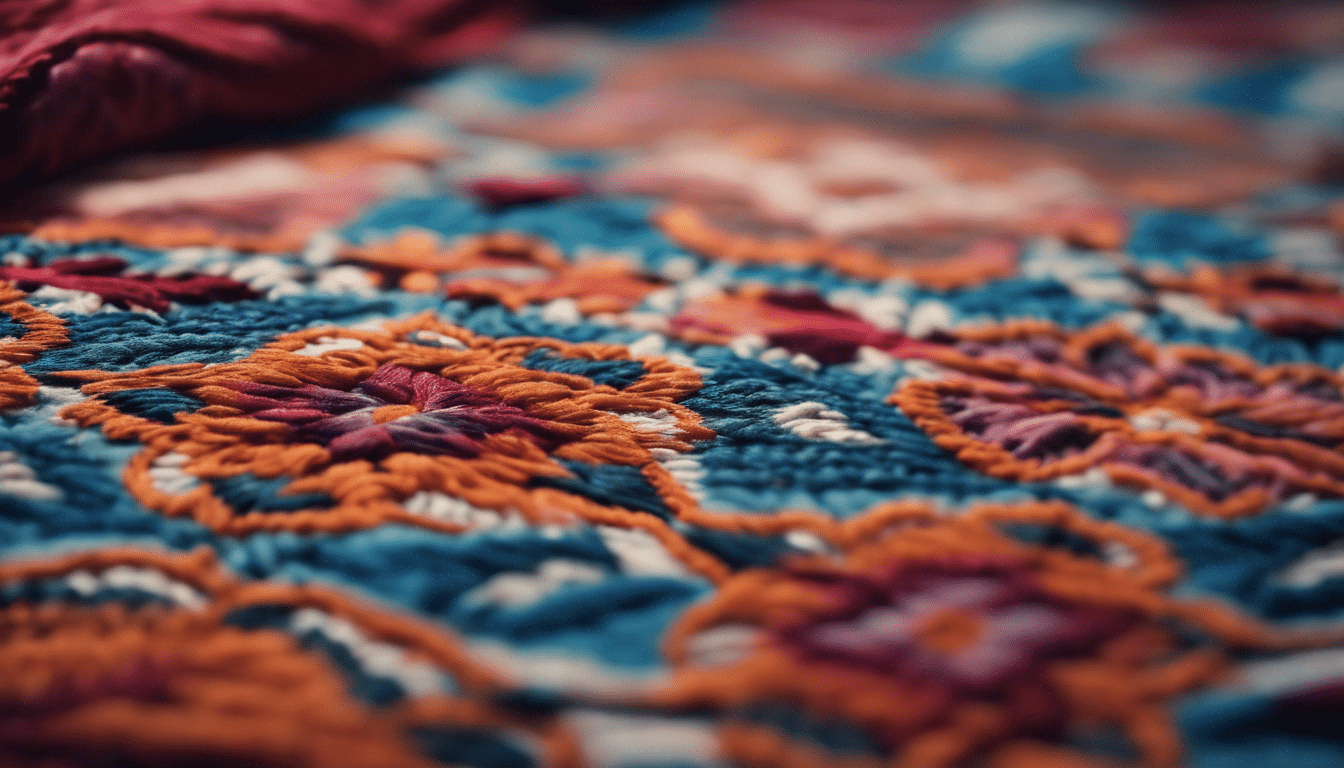
In the sun-bathed land of Morocco, an intricate tapestry of culture and tradition is woven into the very fabric of its identity. At the heart of this woven narrative lies the art of Moroccan textiles, a heritage that tells stories of ancient civilizations, weaving techniques handed down through generations, and an aesthetic that breathes life into the mundane.
Historical Weave: The Timeline
Morocco’s relationship with textile artistry stretches back millennia, its threads running as deep as the country’s own history. From the time of the early Berber tribes, textiles have been a fundamental part of Moroccan life. The indigenous people embraced the loom, concocting a tapestry of patterns that reflected their connection to the land, their spiritual beliefs, and the everyday beauty found in nature.
As time progressed, Moroccan textile art blossomed with the arrival of Arabs in the 7th century, who introduced new materials like silk and cotton and brought in patterns from the Islamic motifs. This confluence of Berber and Arab influences enriched the textile heritage of Morocco, creating a dazzling array of designs that resonate with historical significance.
The Fabric of Society: Community and Craftsmanship
The production of textiles in Morocco is not merely an act of creation but also a social endeavor that reinforces the bonds of community. Weavers, often women, gather to spin and weave, sharing stories, passing down techniques, and preserving the artistic knowledge that defines Moroccan textile art. These gatherings are not just about crafting materials but also about maintaining a dialogue between the past and present, ensuring that the cultural identity woven into each thread remains intact.
Moroccan textiles are distinguished not just by their beauty but also by their diversity. Each region boasts its unique style, patterns, and colors that reflect the local environment and history. The Middle Atlas is famous for its heavy, warm Beni Ourain carpets, while the High Atlas produces colorful, lightweight Azilal rugs. Each piece serves as a geographical marker, a living map of Morocco’s textile landscape.
The Palette of Nature: Colors and Materials
The hues found in Moroccan fabrics are drawn from nature’s own palette. The dyes used are typically derived from plants and minerals, with madder root for red, indigo for blue, and saffron for yellow. The rich, earthy tones speak to the natural environment of Morocco and are indicative of the country’s varied landscapes. Materials, too, are sourced from the natural world: sheep’s wool, goat hair, and even camel hair are traditionally spun into thread.
What truly sets Moroccan textiles apart is the handcrafted approach to making them. Hand-weaving on traditional wooden looms, artisans pour their skill and devotion into every piece. This level of craftsmanship ensures that no two pieces are alike, each a testament to the artisan’s unique touch and the organic asymmetries of human work.
Patterns with Purpose: Symbolism in Design
In the winding fabric of Moroccan tapestries and rugs, each pattern holds meaning. Geometric designs, symbolic representations, and abstract figures tell tales of fertility, protection, and prosperity. Motifs such as the diamond, chevron, and the triangle are recurring elements that go beyond mere decoration: they are a visual language, a means for the weaver to express beliefs, record events, and convey blessings.
Far from being static, the symbolism within Moroccan textile art is ever-evolving. New influences and changing times infuse contemporary interpretations into age-old patterns, paralleling Morocco’s own journey through the ages.
The Future Woven from the Past: The Ongoing Legacy
As the world moves toward rapid modernization, the Moroccan textile art faces the challenge of preservation. Yet, there is a burgeoning renaissance, a renewed interest in these traditional techniques and motifs. Contemporary artisans blend ancestral knowledge with new ideas, ensuring the survival and evolution of this rich art form. By valuing the past and adapting to the present, the vibrant tapestry of Moroccan textile art continues to unravel, telling new stories, while holding fast to the strong roots that have anchored it through the centuries.
Moroccan textile art, in all its expressive, colorful, and historic glory, stands as a beacon of cultural identity and a testament to human creativity. It remains not only an object of visual and tactile beauty but also a strong, unbroken thread connecting Morocco to its rich ancestral heritage.
Key Elements of Moroccan Textile Design
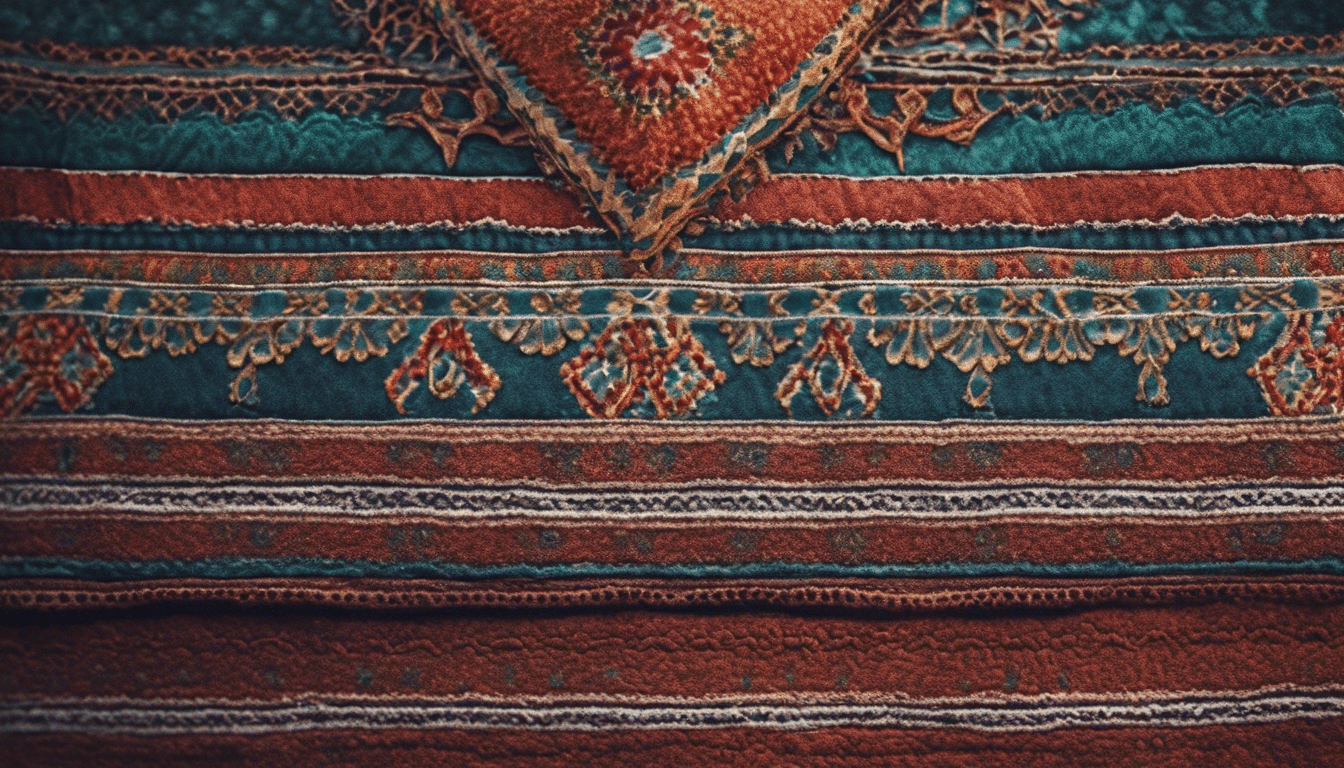
Morocco, a land where the warm hues of the desert meet the vibrant blues of the sea, has nurtured an array of artistic expressions that extend into the realm of textile art. At the heart of this tradition lie the key elements that make Moroccan textile design an enduring and mesmerizing craft.
The Interplay of Color and Pattern
In the bustling souks and serene ateliers of Morocco, textile artisans are masters of color and pattern. The textiles are often characterized by bold, contrasting colors that echo the nation’s diverse landscapes. These patterns, ranging from geometric to floral motifs, are deeply symbolic and hold tales of the land’s rich cultural heritage. To understand the essence of Moroccan pattern design, one must delve into its most significant elements:
- Geometric Motifs: Look no further than the iconic Moroccan tile work, or zellij, to see the geometric patterns that are also mirrored in textiles. The repetition of squares, triangles, and stars create a mesmerizing mosaic that is testament to the Islamic influence on Moroccan art.
- Floral Designs: Blossoming across fabrics are patterns depicting the flora of Morocco. From the lush roses of the valleys to the resilient plants of the desert, these designs bring the country’s natural beauty into the realm of the tactile.
- Symbolic Shapes: Certain shapes, like the eight-pointed star, hold a deeper meaning, often representing the connection between the spiritual and earthly realms.
Textures: A Tapestry of Techniques
The very fabric of Moroccan society is woven into its textiles, each region boasting techniques unique to its identity. The variety of textures present in Moroccan textiles is a palate of diverse techniques:
- Weaving: From the handlooms of Berber tribes to the refined looms in the imperial cities, weaving is a foundational technique of Moroccan textiles. The hand-woven Djellaba fabrics are a perfect example of this craft’s adaptability and resilience.
- Embroidery: Fine embroidery is often the hallmark of Moroccan textile detail, with cities like Fez and Marrakech famed for their intricate handiwork. Each stitch is a testament to the artisan’s skill and the meticulous attention to detail.
- Knotting and Fringing: Often found on the edges of rugs and shawls, knotting and fringing are techniques that add texture and movement to the pieces. The hand-knotted fringes of a Moroccan rug are not only decorative but also a symbol of the weaver’s personal style.
The Harmony of Material Blends
The textiles of Morocco are not just a visual and tactile feast but are also an alchemy of materials. The traditional use of wool, cotton, and silk speaks of the dynamic nature of Moroccan craftsmanship. The blend of these fibers results in creations that are as varied as they are luxurious. In the high Atlas Mountains, the wool from local sheep is transformed into thick, warm blankets, while in the coastal towns, cotton is woven into light and airy garments ideal for the Mediterranean climate.
Artisanry: The Personal Touch of Craftsmanship
Perhaps the most compelling aspect of Moroccan textile art is the presence of the artisan’s hand in every piece. This hands-on approach ensures that no two pieces are identical, each one a unique tapestry of personal expression and heritage. The artisans, guardians of ancestral techniques, are the living connection to the past, weaving historical narratives into contemporary creations.
Moroccan textile design is not just a feast for the senses; it’s a dialogue between tradition and innovation, narrated through the threads of time. As these key elements of design intertwine, they continue to shape the ever-evolving tapestry that is Moroccan art.
For those who adore the luxurious interplay of texture, color, and pattern, Moroccan textiles are a testament to the country’s artistic spirit. It’s a legacy wrapped in the very threads that make up the rich fabric of Morocco’s cultural tapestry—a truly dynamic and enduring art form.

